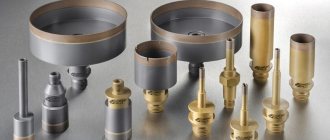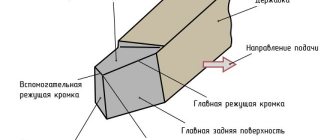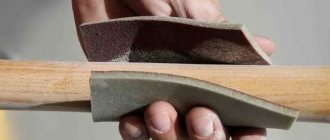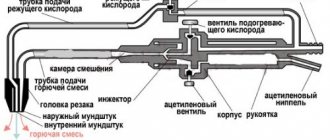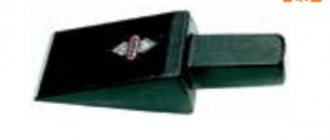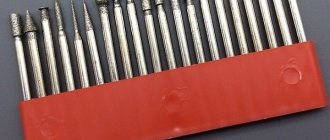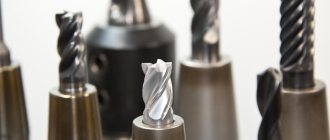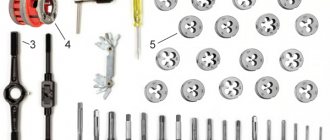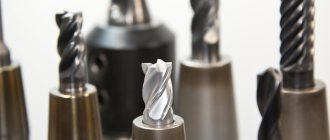- Passage shot blaster
- Suspended shot blaster
- Drum shot blaster
- Belt shot blaster
- Shot blaster for pipe cleaning
SHOT BLASTING CHAMBER is a device for processing and cleaning products and structures made of metal. Shot blasting chambers are made using modern technologies, using Russian and European components.
produces uninhabited and inhabited shot blasting chambers, walk-through and suspended designs at affordable prices.
Advantages and disadvantages of equipment
The advantages are:
- high performance;
- reduction of abrasive material consumption;
- ideal surface cleaning;
- the abrasive can be used repeatedly;
- the design is designed in such a way that the exhaust device removes all impurities and contaminants removed from the surface of the products;
- cleaning of workpieces of complex configuration.
The disadvantages include high costs at the equipment installation stage, as well as the complexity of installation.
DESCRIPTION OF THE CHAMBER AND ABRASIVE BLAST EQUIPMENT
WHAT IS INCLUDED:
1. Prefabricated abrasive blast chamber:
- The chamber is made in the form of a frame consisting of welded profiles attached to the foundation;
- Sandwich panels are attached to the walls and ceiling of the frame using self-tapping screws;
- The chamber is equipped with lighting, supply and exhaust ventilation diffusers, swing gates, and a door for service personnel;
- Swing gates and service door with viewing window.
- The floor of the chamber is made of welded lattice panels with a maximum load of 200 kg/m2.
2. Pressure abrasive blasting installation type DSG-200:
- Dosing valve for working with any abrasive material with a fraction of up to 3 mm;
- Nozzle holder DN-32 for a nozzle with a Venturi channel;
- Coupon kit;
- Remote control REMCON X with key and TWIN sleeve 20 m long;
- Oil-moisture separator filter CAF-3.
3. Operator protection kit:
- Protective helmet with cape;
- Air filter FV 120/240 for supplying air to the helmet;
- Air hose 9*15 mm, 20 meters long for supplying air for the operator’s breathing;
- Professional operator overalls with leggings.
Design features and operating principle
The installation is a special design, the metal wall panels of which are coated on the inside with noise-absorbing and abrasive-resistant material.
The device includes:
- shot blasting machine, which supplies a fixed amount of shot into the chamber;
- shot collection system;
- ventilation system (for habitable chambers);
- shock-resistant lighting equipment;
- transport system, thanks to which it is possible to install various lifting devices to increase worker mobility.
Depending on the equipment that the camera is equipped with, the following types are distinguished.
Inhabited and uninhabited
- The habitable chamber has become most widespread and involves human participation in the process of surface treatment.
- In an uninhabited chamber, a person is not in the shot blasting zone, monitoring the processing process through a special window.
Important!
Inhabited cameras are subject to high safety requirements. To avoid injury, the operator must be provided with special clothing and personal protective equipment during work in accordance with established standards.
Checkpoint
In pass-through type installations, roller conveyors (roller tables) are used, along which parts requiring processing are transported. In such devices, rolled sheets and profiles are cleaned (horizontal chambers), as well as metal structures and I-beams (vertical chambers).
Hanging
Using a special hook powered by an electric motor, the product is fed into the device for processing. Thanks to this principle, work operations can be performed from different sides.
Pressure type
Excellent for large volumes of work and intensive processing. The shot blasting pressure chamber is characterized by high productivity; during its operation, heavy abrasives (cast iron and steel shot) are used.
Uninhabited chamber and its features
The uninhabited chamber for sandblasting is a compact box on legs. It has holes for hands and insertion of the device nozzle, as well as an observation window for monitoring the work.
Uninhabited chambers can be divided into the following categories:
- ejector;
- pressure;
- automatic.
In addition, the devices differ in their configuration. For example, the Nordberg camera is distributed in different configurations.
Ejector chambers: design, advantages and disadvantages
Ejector-type sandblasting chambers have low power. Used for small, simple work on compact-sized parts. With their help, you can add a haze to glass and plastic, remove a layer of paint from a small area, make an engraving, and remove shallow areas of corrosion or roughness from metal.
Suitable for use in small businesses or private use. Has the following advantages:
- compactness;
- low price;
- safety for the operator;
- consumption of less power.
The installation used in such a chamber requires a 7.5-15 kW compressor, and the compressed air will consume up to 1500 l/min.
The disadvantage of the ejector installation is the impossibility of carrying out large-scale work. Small size and power make it practically inapplicable in large-scale industry.
KSO ejector chambers are popular among individuals.
Pressure chambers: design, advantages and disadvantages
The pressure sandblasting chamber is much more powerful and productive (on average 10 times) than the ejector one, and therefore has found its application in industry to solve larger-scale problems. Pressure equipment consumes up to 5000 l/min of compressed air, and therefore requires a more powerful compressor - up to 37 kW.
Such a sandblasting chamber is most often used for metal in the field of metalworking for post-weld cleaning, removing corrosion, and imparting varying degrees of roughness.
Advantages of such an installation:
- the ability to solve medium-scale problems;
- high power and performance;
- safety for the operator.
However, such sandblasting equipment is practically unsuitable for carrying out small, “jewelry” work. This type includes, for example, the Forsage camera.
Automatic cameras: device, advantages and disadvantages
An automatic sandblasting chamber is most often used for processing glass and mirror surfaces to matt them or create patterns.
The essence of the installation is that the operator controls all work remotely through the panel. Movable carriages are installed inside the chamber, on which a gun (or several) is fixed, through which a jet of abrasive is supplied. By changing the movement step, air pressure, and abrasive fraction, you can create different patterns and textures.
Advantages of an automatic camera:
- possibility of remote control;
- absolute safety for the operator;
- carrying out particularly delicate work.
For rougher and larger-scale work, such cameras are practically not used.
Shot collection systems
To reduce the cost of cleaning, during or after processing it is necessary to collect steel or cast iron shots, clean them of dust and impurities, accumulate them in a special device and reload them into shot blasting machines.
The used fraction can be collected:
- manually using special vacuum equipment (usually at the end of the work shift). This method is inconvenient, as productivity decreases and additional time must be allocated;
- using a scraper floor operating in automatic mode. The spent abrasive is collected directly during the cleaning process. The advantage is that there are no breaks in work to remove the shot.
GENERAL DESCRIPTION OF THE KDO SET
What is the KDO camera made of?
The chamber is assembled from steel profile structures and sandwich panels. The internal surfaces of the camera are protected by wear-resistant rubber sheets.
How does a KDO camera work?
The abrasive blasting operator processes the product while standing on a grated floor (flooring). The spent abrasive passes through the grating onto the scraper conveyors. The abrasive collected by the longitudinal conveyors is supplied to the transverse conveyor.
How is abrasive cleaned?
Using a bucket elevator, the collected abrasive enters the pneumatic blowing separator, where the abrasive cleaning process takes place. Then the abrasive material enters the storage tank (hopper) with distribution to 1 pressure unit.
The separator is connected by an air duct to a self-cleaning filter. The filter effectively cleans the air coming from the working chamber and separator and supplies purified air to the workshop.
General characteristics
| Camera type | Dead end |
| Dimensions, m | 3.2x2.4x3.5 (LxWxH) |
| Gates | Swing |
| Abrasive used | metal abrasive materials up to 3 mm fraction |
| Abrasive blasting equipment | DSG-200 installation with remote control |
| Horizontal abrasive transport system | automatic: slatted floor with an area of 7.68 m2; longitudinal scraper conveyors 2 pcs. 4.2 m each; cross scraper conveyor 1 pc. 3.4 m; |
| Vertical abrasive transport system | automatic: bucket elevator |
| Abrasive material return and cleaning system | pneumatic blowing separation system |
| Ventilation dust collection equipment | KOMAX filter |
| PPE for the operator | Overalls with leggings, helmet, breathing filter |
Principle of work
Processing of metal parts in a shot blasting chamber is carried out by the impact of solid or crushed shot on the surface of the product. Under pressure at high speed, the shot flies out of the shot blasting machine and collides with the surface that requires processing. As a result, a protective layer is created. The size of the shot is selected according to the task at hand and depends on the required impact force.
Inhabited shot blasting chamber
The inhabited shot blasting chamber is used to clean welded metal structures from dirt, scale, rust and other surface contaminants.
Processing is done manually by an operator who is in a closed chamber. Directing a stream of abrasive (shot) accelerated by compressed air onto the surface to be cleaned, which gives the surface a relatively rough, uniformly distributed metallic sheen. Manual shot blasting chamber improves the appearance of welded metal structures, and also increases the quality of subsequent priming, painting and corrosion protection.
Safety precautions
The operation of the installation must be carried out by personnel who have undergone labor safety training, who are proficient in working with the required equipment, who have the appropriate qualifications and permission to work.
The camera must provide:
- complete isolation of the work area;
- preventing body parts from getting into gaps or parts of equipment;
- fences that prevent the shot from flying out of the chamber space;
- blocking doors, movable partitions, if it is possible to open or remove them without special devices;
- lighting sufficient to determine the location of the door during heavy dust conditions;
- eliminating the possibility of starting shot blasting equipment when the door to the chamber is not closed;
- interlocks preventing personnel from entering the chamber space during product processing.
The entry and exit points for workpieces from the workspace must be inaccessible to unauthorized persons. Personnel at the entrance and exit of the installation must wear personal protective equipment. The device, which uses manual shot blasting, is equipped with an observation window to monitor the work inside the chamber. The window must be impact-resistant and prevent shot from flying out, and the transparency of the glass must be maintained.
How to buy a complex for shot blasting large parts and abrasive cleaning
Please note that the price on the website is not a public offer and is valid as of 08/08/2021. To clarify the current cost of the kit and its elements, contact our manager.
We will send you a detailed commercial offer with the current price and technical characteristics of the equipment.
We work on an application system. If you need a complex for cleaning parts, call us by phone or email us. We will advise you on all issues of purchase, delivery and installation.
What does the price consist of?
The shot blasting chamber is manufactured according to an individual project and depends on the specific requirements of the customer. Its price is determined as a result of a thorough analysis of the location and the tasks that need to be solved by the consumer. For specific operating conditions, the chamber can be equipped with shot blasting elements of various price categories, which will significantly affect its final cost.
Automatic cameras equipped with modern robotic installations will be much more expensive than devices of the same size, but the design of which includes a small set of shot blasting equipment with manual collection of abrasive. Today, using a shot blasting chamber to clean metal surfaces is the optimal and cost-effective way to prepare products for further use.
What is shot blasting?
Shot blasting is a special technology for processing metal surfaces, which involves the impact of small particle particles on the metal. To influence a metal surface, special spray installations are used, the principle of which is to accelerate particle pellets under the influence of compressed air. From a physical point of view, shot blasting surfaces looks like this:
- Small pellets are inserted into a special sprayer; at the initial stage, their kinetic energy is zero.
- When the device is started, the pellet particles fall under a stream of compressed air, which imparts greater kinetic energy to the pellets - this leads to serious acceleration of the particles.
- Under the influence of a jet of compressed air, particles fly out of the spray gun at high speed and hit the metal surface.
- If there are any foreign particles on the surface of a metal object (dirt, dust, debris, rust, scale, etc.), then the pellets impart a large amount of kinetic energy to such particles.
- This leads to the fact that, due to excess kinetic energy, foreign particles fly off the surface, which leads to cleaning of the metal (the metal itself, if all the rules are followed, does not deform, since it has increased strength).
- It should be taken into account that pellet particles during processing can either retain their shape or become deformed or destroyed (in whole or in part) - it all depends on the physical properties of the pellets.
Principle of workpiece placement
Shot blasting machines can also be classified according to the principle of loading workpieces. To place blanks the following can be used:
- Fixed table
- Rotary table
- Hook hangers
The type of workpieces being processed, as well as the nature of shot blasting itself, depends on the loading principle.
- A fixed table is most often used to place fairly large workpieces. In this type, the abrasive suspension supply nozzles are located on different sides of the table. Additionally, a fixed table can also be located in habitable chambers. That is, the operator himself walks around the workpiece and cleans problem surfaces.
- The movable table is used in shot blasting machines with a one-sided nozzle. As processing progresses, the operator needs to rotate the table using the control panel, allowing access to still untreated surfaces.
Tables have one significant drawback. The surface on which the workpiece rests is not treated with abrasive. In this case, you need to stop the processing process and turn the workpiece over. Rigging operations take up valuable time.
- Hooks make it possible to hang the workpiece, which provides access to all processed surfaces. In the case of a table, the shot does not have access to the supporting surface. Hook hangers are often used for cleaning small and medium-sized workpieces. But there are also exceptions.
